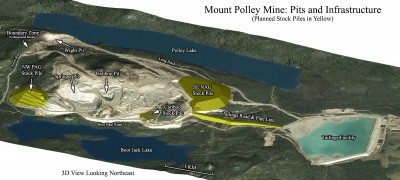BC’s Auditor General Carol Bellringer’s assessment of the Ministry of Mining and Energy’s compliance and enforcement operations is withering.
“Almost all of our expectations for a robust compliance and enforcement program were not met,” she says.
Part of the extensive audit included the examination of the Mt. Polley tailings pond dam breach.
“We determined that the Ministry of Energy and Mines did not ensure that the tailings dam in Mt. Polley was built to the design specifications,” Bellringer says. “The expert panel pointed out that, had it been, the dam would not have failed.”
Bellringer said that, while the government’s expert panel considered how the Mt. Polley dam failed, the audit conducted by her office looked at why the breach occurred and whether or not the Ministry’s compliance enforcement – or lack thereof – was a factor.
Mt. Polley’s tailings pond experienced a significant breach in August, 2014. The result was 25 million cubic meters of wastewater and tailings from the mine being discharged into Quesnel Lake. It is the largest environmental disaster in Canadian history.
Bellringer says that, while the cause of the dam failure has been investigated, the total environmental impacts remain unknown.
Update: Mining Minister Bill Bennett takes issue with this finding.
“The regulator cannot be the designer,” says Bennett. “If the regulator becomes the designer, the liability shifts from the designer and the engineer to the taxpayer and there is no district that we are aware of that works under that model.”
Bennett says Mt. Polley points to possible improvements in regulation and additional protection against unforeseen situations, not a lack of diligence on the part of the Ministry of Energy and Mines.
“We believe, and our belief is supported by the Independent Panel of Experts, that the staff in the Ministry of Energy and Mines discharged their duties effectively and responsibly in accordance with the rules in place at the time of the Mt. Polley accident.”
However, Bennett does admit that an accident of Mt. Polley’s magnitude requires some kind of response.
“When a Mt. Polley happens, it is time for serious introspection by the government and by our partners in the engineering profession.”
Something going on in the Prince George area you think people should know about?
Send us a news tip by emailing [email protected].






